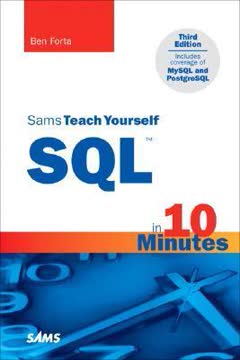Key Takeaways
1. SQL is the Language of Databases
SQL is a language designed specifically for communicating with databases.
Universal Access. SQL (Structured Query Language) stands as the cornerstone for interacting with virtually any database management system (DBMS). Its non-proprietary nature ensures that learning SQL equips you with the skills to access and manipulate data across diverse platforms, from personal applications to enterprise-level systems.
Database Basics. A database is an organized collection of data, often visualized as a filing cabinet. Within this cabinet, tables act as structured files, each holding specific types of data. Columns define the individual pieces of information within a table, such as customer names or product prices, while rows represent individual records.
Primary Keys. Every table should have a primary key, a column (or set of columns) that uniquely identifies each row. This is crucial for efficiently updating or deleting specific records. Understanding these fundamental concepts is essential for effectively using SQL to manage and retrieve data.
2. Mastering SELECT: The Foundation of Data Retrieval
The SQL statement that you'll probably use most frequently is the SELECT statement.
Core Functionality. The SELECT statement is the workhorse of SQL, enabling you to retrieve data from one or more tables. At its simplest, it requires specifying what you want to select (columns) and from where (table).
Column Selection. You can retrieve individual columns, multiple columns (separated by commas), or all columns using the asterisk (*) wildcard. While using * might seem convenient, it's generally better to explicitly list the columns you need to improve performance and avoid retrieving unnecessary data.
Practical Application. For example, SELECT prod_name FROM Products; retrieves all product names from the Products table. SELECT prod_id, prod_name, prod_price FROM Products; retrieves the ID, name, and price of each product. Mastering the SELECT statement is the first step toward becoming proficient in SQL.
3. Sorting and Filtering: Refining Your Data
To explicitly sort data retrieved using a SELECT statement, the ORDER BY clause is used.
Ordering Data. The ORDER BY clause allows you to sort retrieved data based on one or more columns. You can specify ascending (ASC) or descending (DESC) order. If no order is specified, ascending is the default.
Filtering Data. The WHERE clause enables you to filter data based on specific conditions. This allows you to retrieve only the rows that meet your criteria. SQL supports a range of conditional operators, including =, <>, <, >, BETWEEN, and IS NULL.
Combining Clauses. You can combine ORDER BY and WHERE clauses to both filter and sort your data. For example, SELECT prod_name, prod_price FROM Products WHERE prod_price < 10 ORDER BY prod_name; retrieves the names and prices of all products costing less than $10, sorted alphabetically by name.
4. Calculated Fields: Transforming Data on the Fly
Unlike all the columns we retrieved in the lessons thus far, calculated fields don't actually exist in database tables.
Dynamic Data. Calculated fields are created on-the-fly within a SELECT statement, allowing you to transform, convert, or reformat data without altering the underlying table. This is particularly useful when you need data in a specific format for reports or applications.
Concatenation. You can concatenate fields using operators like + or || (depending on the DBMS) to combine multiple columns into a single value. For example, you might combine a vendor's name and country into a single "vendor title" field.
Aliases. To give a calculated field a name that can be referenced by client applications, use the AS keyword to assign an alias. For example, SELECT quantity*item_price AS expanded_price FROM OrderItems; creates a calculated field named expanded_price representing the total price of each item.
5. Functions: SQL's Versatile Toolkit
Functions are operations that are usually performed on data, usually to facilitate conversion and manipulation.
Data Manipulation. SQL functions provide a powerful way to manipulate data within your queries. These functions can be used to perform a variety of operations, including text manipulation, numeric calculations, and date/time formatting.
Types of Functions. Common function types include:
- Text functions:
UPPER(),LOWER(),TRIM() - Numeric functions:
ABS(),ROUND(),SQRT() - Date/time functions:
DATEPART(),YEAR(),MONTH()
DBMS Specificity. It's important to note that function syntax and availability can vary significantly between different DBMSs. Always consult your DBMS documentation to determine the specific functions supported and their correct usage.
6. Summarizing and Grouping: Gaining Insights from Data
Aggregate Functions: Functions that operate on a set of rows to calculate and return a single value.
Aggregate Functions. SQL provides aggregate functions to summarize data without retrieving every row. These functions include AVG(), COUNT(), MAX(), MIN(), and SUM().
Grouping Data. The GROUP BY clause allows you to divide data into logical sets and perform aggregate calculations on each group. For example, you can use GROUP BY vend_id to calculate the number of products offered by each vendor.
Filtering Groups. The HAVING clause is used to filter groups based on aggregate values. For example, you can use HAVING COUNT(*) >= 2 to retrieve only those vendors who offer two or more products.
7. Joins: Uniting Tables for Comprehensive Queries
Simply put, a join is a mechanism used to associate tables within a SELECT statement (and thus the name join).
Relational Power. Joins are a fundamental feature of SQL that allows you to combine data from multiple tables into a single result set. This is essential for working with relational databases, where data is often spread across multiple tables to ensure data integrity and efficiency.
Types of Joins. The most common type of join is the inner join (or equijoin), which returns only the rows that have matching values in both tables. Outer joins, including left outer joins and right outer joins, allow you to include rows from one table even if there are no matching rows in the other table.
Creating Joins. To create a join, you specify the tables to be included in the FROM clause and define the relationship between them using a WHERE clause or an ON clause (with the INNER JOIN syntax). For example, SELECT vend_name, prod_name FROM Vendors INNER JOIN Products ON Vendors.vend_id = Products.vend_id; joins the Vendors and Products tables based on the vend_id column.
8. Subqueries: Nesting Queries for Advanced Filtering
Subqueries are always processed starting with the innermost SELECT statement and working outward.
Nested Power. Subqueries are queries embedded within other queries, allowing you to create complex and dynamic filtering conditions. The inner query is executed first, and its results are used by the outer query.
Filtering with Subqueries. Subqueries are often used in the WHERE clause with operators like IN to filter data based on the results of another query. For example, you can retrieve all customers who have ordered a specific product by using a subquery to find the order numbers containing that product.
Calculated Fields with Subqueries. Subqueries can also be used to create calculated fields, allowing you to perform aggregate calculations for each row in the outer query. For example, you can display the total number of orders placed by each customer by using a subquery to count the orders for each customer ID.
9. Data Manipulation: Inserting, Updating, and Deleting
As its name suggests, INSERT is used to insert (add) rows to a database table.
Adding Data. The INSERT statement is used to add new rows to a table. You can insert a complete row by specifying values for all columns or insert a partial row by specifying values for only some columns.
Modifying Data. The UPDATE statement is used to modify existing data in a table. You can update specific rows by using a WHERE clause or update all rows in the table (with caution!).
Removing Data. The DELETE statement is used to remove rows from a table. Like UPDATE, you can delete specific rows by using a WHERE clause or delete all rows in the table (again, with caution!).
10. Table Management: Creating, Altering, and Deleting Tables
SQL is not used just for table data manipulation.
Schema Control. SQL is not just for manipulating data; it's also used to manage the structure of your database. The CREATE TABLE statement allows you to define new tables, specifying column names, datatypes, and constraints.
Modifying Tables. The ALTER TABLE statement allows you to modify the structure of existing tables, such as adding or dropping columns. However, the specific alterations allowed can vary depending on the DBMS.
Removing Tables. The DROP TABLE statement allows you to permanently delete a table from the database. This operation is irreversible, so use it with caution.
11. Views: Simplifying and Securing Data Access
Views are virtual tables.
Virtual Tables. Views are virtual tables that contain queries rather than actual data. They provide a way to simplify complex SQL operations, expose parts of a table instead of complete tables, and secure data by granting users access to specific subsets of data.
Simplifying Queries. Views can encapsulate complex joins, calculated fields, and filtering conditions, allowing users to retrieve data with simpler queries. For example, you can create a view that joins multiple tables to retrieve customer order information and then allow users to query the view without needing to understand the underlying table structure.
Securing Data. Views can be used to restrict access to sensitive data by exposing only certain columns or rows to specific users. This allows you to control who can see what data and prevent unauthorized access.
12. Transaction Processing: Ensuring Data Integrity
Transaction processing is used to maintain database integrity by ensuring that batches of SQL operations execute completely or not at all.
All or Nothing. Transaction processing ensures that a series of SQL operations are executed as a single unit. If any operation fails, the entire transaction is rolled back, preventing partial updates and maintaining data integrity.
Commit and Rollback. The COMMIT statement is used to save the changes made during a transaction to the database. The ROLLBACK statement is used to undo the changes made during a transaction, restoring the database to its previous state.
Savepoints. Savepoints allow you to create temporary placeholders within a transaction, enabling you to roll back to a specific point in the transaction rather than undoing the entire transaction. This provides more granular control over transaction management.
Last updated:
FAQ
1. What is "Sams Teach Yourself SQL in 10 Minutes" by Ben Forta about?
- Concise SQL Introduction: The book provides a fast-paced, accessible tutorial on the SQL language, focusing on practical skills for interacting with databases.
- Step-by-Step Lessons: It is structured as a series of short lessons, each designed to be completed in 10 minutes or less, covering everything from basic data retrieval to advanced SQL features.
- Platform Coverage: The book includes examples and notes for all major commercial SQL platforms, such as MySQL, PostgreSQL, SQL Server, Oracle, DB2, and Access.
- Practical Focus: Rather than delving into database theory or design, the book emphasizes hands-on SQL usage for real-world tasks like querying, updating, and managing data.
2. Why should I read "Sams Teach Yourself SQL in 10 Minutes" by Ben Forta?
- Quick Learning Curve: The book is ideal for beginners or those needing a rapid refresher, allowing readers to become productive in SQL quickly without prior experience.
- Clear, Practical Examples: Ben Forta uses concise, real-world examples that are easy to follow and immediately applicable to common database tasks.
- Cross-Platform Relevance: The lessons are designed to be relevant across different database management systems, with specific notes on platform differences.
- Focus on Essential SQL: The book avoids overwhelming readers with unnecessary theory, instead teaching the SQL commands and techniques most users need.
3. Who is the target audience for "Sams Teach Yourself SQL in 10 Minutes" by Ben Forta?
- SQL Beginners: Anyone new to SQL who wants to learn the language efficiently and effectively.
- Application Developers: Programmers and developers who need to integrate SQL into their applications or workflows.
- Database Users: Office users, web designers, and database administrators seeking to improve their ability to interact with databases.
- Time-Constrained Learners: Readers who want to become productive in SQL without investing in lengthy, theory-heavy textbooks.
4. What are the key takeaways from "Sams Teach Yourself SQL in 10 Minutes" by Ben Forta?
- Core SQL Skills: Mastery of essential SQL statements such as SELECT, INSERT, UPDATE, DELETE, and the ability to filter, sort, and group data.
- Understanding of Relational Concepts: A practical grasp of tables, rows, columns, primary keys, foreign keys, and how relational databases are structured.
- Advanced SQL Features: Exposure to joins, subqueries, views, stored procedures, transactions, and constraints, with clear explanations and examples.
- Cross-Platform Awareness: Awareness of SQL syntax differences and compatibility issues across major database systems.
5. How does Ben Forta structure the learning process in "Sams Teach Yourself SQL in 10 Minutes"?
- Lesson-Based Format: The book is divided into short, focused lessons, each targeting a specific SQL concept or technique.
- Hands-On Practice: Each lesson includes real SQL statements and encourages readers to try examples themselves using provided sample tables and scripts.
- Progressive Complexity: Lessons start with basic concepts and gradually introduce more advanced topics, building on previous knowledge.
- Practical Tips and Warnings: The author includes notes, tips, and cautions to help readers avoid common pitfalls and understand best practices.
6. What are the most important SQL concepts and commands explained in "Sams Teach Yourself SQL in 10 Minutes"?
- Data Retrieval: SELECT statements, including filtering (WHERE), sorting (ORDER BY), and grouping (GROUP BY, HAVING).
- Data Manipulation: INSERT, UPDATE, and DELETE commands for adding, modifying, and removing data.
- Joins and Subqueries: Techniques for combining data from multiple tables and using subqueries for complex filtering and calculations.
- Functions and Calculated Fields: Use of aggregate functions (COUNT, SUM, AVG, MIN, MAX), string and date functions, and creating calculated fields.
7. How does "Sams Teach Yourself SQL in 10 Minutes" by Ben Forta explain database structure and design basics?
- Tables and Schemas: Explanation of tables as structured lists of data, with schemas defining their layout and properties.
- Columns and Datatypes: Discussion of columns as individual fields, each with a specific datatype that restricts allowed values.
- Rows and Primary Keys: Clarification of rows as records, with primary keys uniquely identifying each row for reliable data manipulation.
- Relationships and Foreign Keys: Introduction to relational concepts, showing how tables are linked via foreign keys to maintain data integrity.
8. What advice does Ben Forta give on filtering, sorting, and grouping data in SQL?
- Filtering with WHERE: Use WHERE clauses to retrieve only the data you need, employing operators like =, <>, <, >, BETWEEN, IN, and IS NULL.
- Sorting with ORDER BY: Sort results by one or more columns, specifying ascending or descending order as needed.
- Grouping with GROUP BY: Aggregate data into logical groups for summary calculations, using GROUP BY and HAVING to filter groups.
- Combining Conditions: Use AND, OR, and parentheses to build complex filter conditions, and always test your WHERE clauses before using them in updates or deletes.
9. How does "Sams Teach Yourself SQL in 10 Minutes" cover advanced SQL topics like joins, subqueries, and views?
- Joins: Detailed explanation of inner joins, outer joins, self joins, and natural joins, with examples of how to combine data from multiple tables.
- Subqueries: Guidance on embedding queries within other queries for dynamic filtering and calculated fields, including performance considerations.
- Views: Introduction to views as virtual tables that encapsulate complex queries, making data retrieval and formatting easier and more secure.
- Stored Procedures and Transactions: Overview of stored procedures for encapsulating logic and transaction processing for maintaining data integrity.
10. What are some common pitfalls and best practices highlighted in "Sams Teach Yourself SQL in 10 Minutes"?
- Always Use WHERE in Updates/Deletes: Avoid accidental data loss by ensuring every UPDATE or DELETE statement has an appropriate WHERE clause.
- Specify Column Lists in INSERTs: Prevent errors and improve code safety by explicitly listing columns in INSERT statements.
- Be Aware of Platform Differences: Recognize that SQL syntax and function support can vary between DBMSs; consult documentation and test your code.
- Use Indexes and Constraints Wisely: Indexes can speed up queries but slow down data modification; constraints help maintain data integrity but must be used correctly.
11. How does "Sams Teach Yourself SQL in 10 Minutes" address SQL compatibility and differences between database systems?
- Platform-Specific Notes: The book highlights differences in SQL syntax, functions, and features across major DBMSs like MySQL, SQL Server, Oracle, DB2, Access, and PostgreSQL.
- Sample Scripts for Each DBMS: Example table creation and population scripts are provided for each supported platform, with notes on incompatibilities.
- Function and Datatype Variations: The author explains that functions and datatypes are often not portable, advising readers to check their DBMS documentation.
- Encouragement to Test and Adapt: Readers are encouraged to experiment and adapt examples to their own environments, using provided appendices for guidance.
12. What are the best quotes from "Sams Teach Yourself SQL in 10 Minutes" by Ben Forta and what do they mean?
- "SQL is designed to do one thing and do it well—provide you with a simple and efficient way to read and write data from a database."
This emphasizes the focused purpose of SQL and the importance of mastering its core functionality. - "Never execute an UPDATE or a DELETE without a WHERE clause unless you really do intend to update and delete every row."
A critical warning to prevent accidental data loss, highlighting a best practice for safe SQL usage. - "There is no downside to using parentheses, and you are always better off eliminating any ambiguity."
Advice on writing clear, unambiguous SQL, especially when combining AND/OR conditions. - "The best way to learn SQL is to try it for yourself."
Encouragement for hands-on practice, reinforcing the book’s practical, example-driven approach.
Review Summary
Sams Teach Yourself SQL™ in 10 Minutes receives mostly positive reviews, praised for its clarity, conciseness, and effectiveness as an introduction to SQL. Readers appreciate its bite-sized chapters, practical examples, and ability to serve as a quick reference. Some criticize it for being too basic or lacking detailed setup instructions. The book is recommended for SQL beginners and those seeking a refresher, though it may not be suitable for advanced users or complex database scenarios. Overall, it's considered a valuable resource for learning SQL fundamentals quickly.
Similar Books



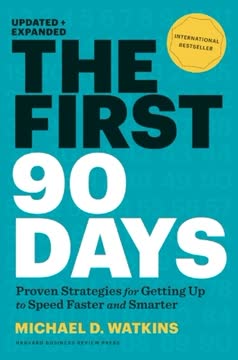


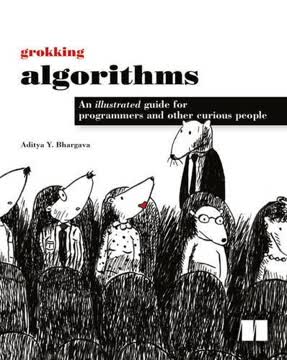
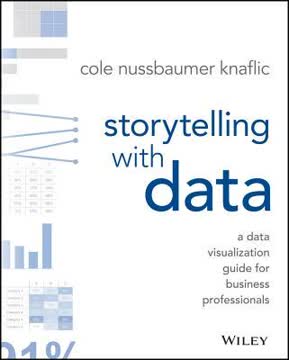
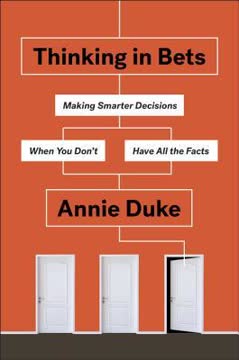

Download PDF
Download EPUB
.epub digital book format is ideal for reading ebooks on phones, tablets, and e-readers.
